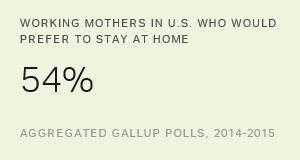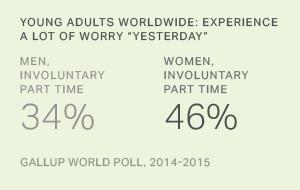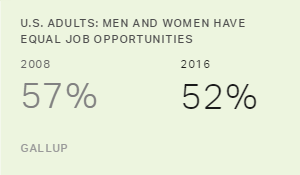The workplace is changing at a faster pace than I have seen in three decades of working outside the home. The standard for how work gets done is vastly different than it was even 10 or 15 years ago. Several factors have influenced the changes in today's workplace, including a new generation of workers and an increasingly global, virtual and contingent labor force. It takes an exceptional workplace to create a culture that consistently gives employees the flexibility to integrate their jobs and their home lives.
Gallup has studied women in the workplace for over 50 years. Our Women in America: Work and Life Well-Lived report is about women, but it is also about men, families, friends, businesses, the economy and our society. The discussion, however, starts with women in the workplace.
We have consistently found that the majority of working mothers would prefer to stay at home and take care of their house and family. Our latest data find that among mothers who are currently employed either full or part time, 54% would prefer to stay home, and 40% say they would prefer to work outside the home. We are learning why women leave the workforce. In most cases, the love and responsibility they feel for their children and families trumps even their best days at the office. When organizations lack flexibility and use outdated standards to reward and recognize performance, they make staying at home an even more attractive option for women.
But most women need to work. Whether it is financial, social or emotional, work provides a positive outlet for women in some capacity. In the U.S., there are 73.5 million women in the workforce. These women have their own stories about why, how, when and where they work. Among them, there is considerable variance in what work is and can be.
One of the goals of this report is to encourage businesses to embrace all segments of women in the workplace and move past common stereotypes about working women. All women should have opportunities to learn, grow and develop.
The topic of women in the workplace is sensitive and controversial. Yet, in every business, leaders must deconstruct and discuss -- transparently -- how to create cultures that make sense for women.
In the U.S., more than 5 million jobs are available. But women and men continue to drop out of the workforce in troubling numbers. We have to figure out how to get people back to work and how to keep them at work. However, many women don't want what businesses are offering them.
As leaders, it is our responsibility to be courageous and create change in the workplace. We have to examine, and even overhaul, our organizational policies, strategies, cultures and values to ensure that employees can maximize their potential in and out of the workplace. Communicating new ideas is not enough to create change. We must take action on our ideas to change the fabric of our culture. When we make workplaces "work" for women, we make life better for them as well as for their families. We create a stronger economy and a better society.
Download Gallup's report, Women in America: Work and Life Well-Lived, to learn more about what women want from work and how employers can deliver on it.



